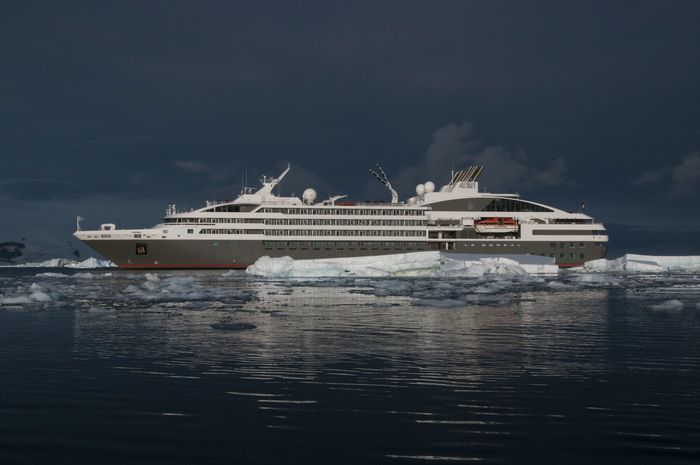Greenland of Great Explorers
Set sail with PONANT on an itinerary discovering the unexplored shores of the eastern coast of Greenland. During this 15-day expedition cruise, you will follow in the footsteps of the great French explorers who pushed the boundaries of polar navigation from the 19th century onwards.
From Longyearbyen in Spitsbergen, Le Boréal will make its way to Jan Mayen Island, which was very dear to Captain Jean-Baptiste Charcot. Located on the threshold of the Arctic and North Atlantic oceans, this isolated and uninhabited volcanic island was a whale hunting centre and is home to large bird colonies.
Your ship will then sail on toward the West coast of Greenland, known for its wild natural environments, its alpine landscapes, and its sea ice carried along the Transpolar Drift.
In the immensity of this legendary island, you will discover the Ittoqqortoormiit region, one of our planet’s most remote inhabited places, where the last hunters of the poles live and maintain their ancestral traditions. In the largest fjord system in the world, you will be captivated by the exceptional scenery tinged red by the iron cliffs.
Le Boréal will take you along the Blosseville Coast, named after the French captain who saw it for the first time in 1833. Here, the ice sheet meets the sea. In the wake of Captain Charcot’s famous ship, the Pourquoi Pas?, you will sail to the Ammassalik region, where you will enjoy an encounter with the Inuit community and have the opportunity to observe the wildlife.
During the last part of your cruise, you will sail up the West coast of Greenland. Along the way, admire the stunning fjords of the Prince Christian Sound and the blue-tinged icebergs of Narsaq before reaching Kangerlussuaq, where this unforgettable cruise will end.
We are privileged guests in these extreme lands where we are at the mercy of weather and ice conditions. The itinerary, landings on certain sites and the observation of certain wildlife cannot be guaranteed. They vary from day to day, making each PONANT cruise a unique experience. The Captain and the Expedition Leader will make every effort to ensure that your experience is as rich as possible, while complying with the safety rules and instructions imposed by the AECO.
When searching for a luxury yacht expedition cruise, there’s one name above all else that you need to know – Ponant Cruises. Founded in 1988 by former French Merchant Navy officers, Ponant combines succulent luxury with authentic adventures on all seven continents.
From classic Mediterranean itineraries and Caribbean sailings, to bucket-list expeditions around Greenland and Antarctica, Ponant cruises proudly counteract the banality of mainstream voyages with a unique take on the concept of small-ship cruising. It’s the absolute trip of a lifetime.

A superb mega-yacht with 132 cabins, she is the fruit of the expertise of the Italian Fincantieri shipyard and French sophistication, as interpreted by designer Jean-Philippe Nuel. Le Boreal remains faithful to Ponant's philosophy - to create a unique atmosphere, a subtle blend of luxury, intimacy and well-being.


